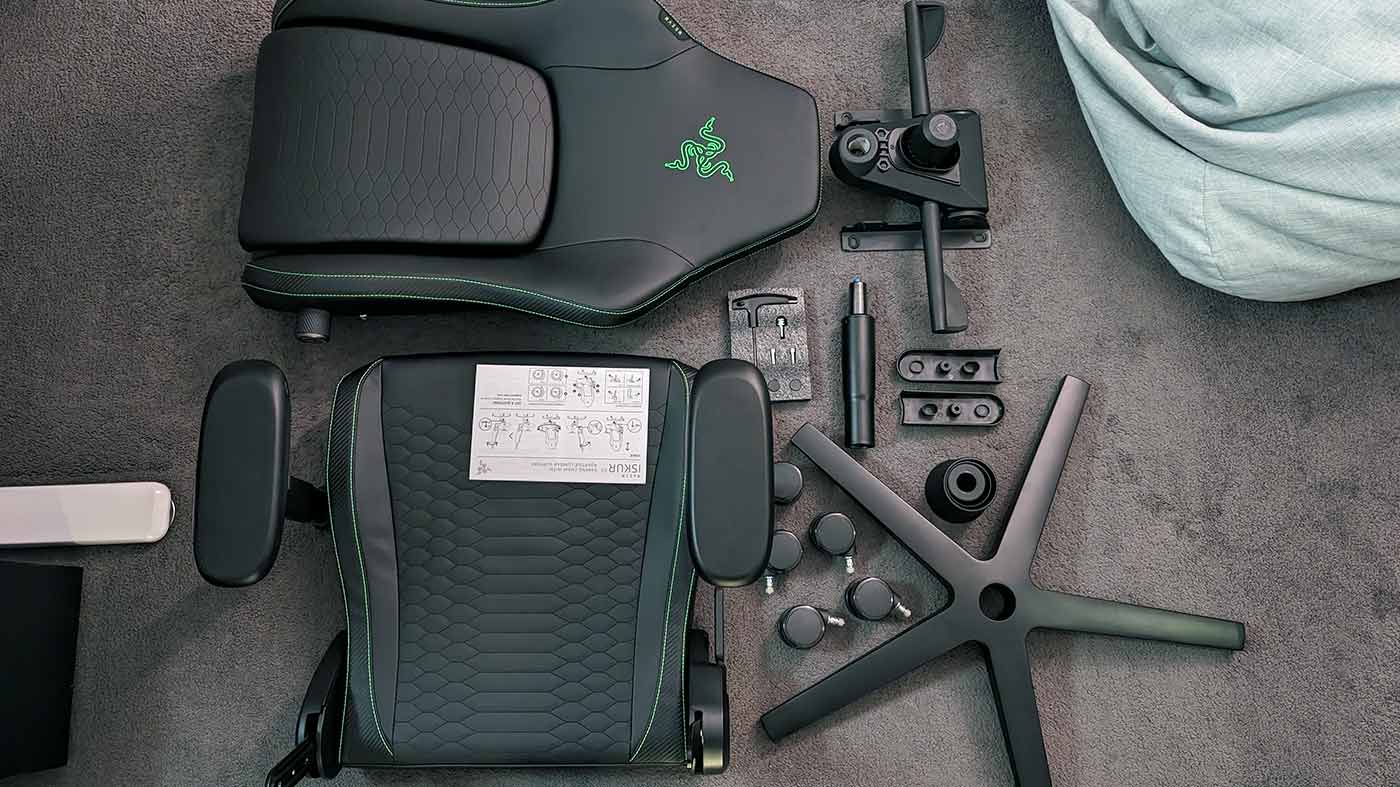I’ve been rocking a version of Razer’s premium Iskur gaming chair for almost a year now, having previously reviewed it in its Fabric variant. In that time it’s been fantastic, so when Razer let me know an Iskur V2 was on the way and at a not-insignificant bump up in price I was curious to see where they’d managed to improve on the build and design. Turns out, Razer has iterated on just about every part of the Iskur and the result is my bum’s new favourite spot in the house.
To understand where the Iskur V2 improves upon its predecessor you of course need to know where it came from, so here’s the gist – the Iskur is a very decent gaming chair for those wanting good construction quality and lumbar support, especially in the Fabric version with its understated looks and nice upholstering. For $799.95 AUD it wasn’t the most affordable gaming chair out there but it met that by being built from high-quality materials and offering a nice amount of flexibility. It was also notable for being packaged to the absolute nth degree with mountains of excess cardboard and foam to clean up after and a somewhat-awkward assembly.
The good news then, is that the first thing I noticed on unboxing and setting up the Iskur V2 is a notable improvement to both experiences. Packaging-wise it wasn’t too different but did seem better organised and with a fair bit less waste at the end. Crucially, the setup was way quicker and easier this time thanks to some thoughtful changes. Things like the castor wheels having an easy-insert rubber end rather than a forceful push to get them in place, or a proper railing for the backrest to slot into while you screw it in with far less time lining up bolts with their respective holes. Putting this chair together solo is much more feasible now and shouldn’t take most people more than 15-20 minutes.
It’s also quickly apparent while setting up the Iskur V2 that it’s constructed even better than before with super solid looking and feeling mechanical components, classy finishes throughout and the same high-quality stitching and materials as ever. All of the levers, buttons and bits across the chair – including the fantastic 4D armrests – feel reliable and responsive which adds a lot to the overall impression of the chair itself. The original Iskur was much the same but it’s nice to see things even more polished in its successor, especially when the price point has shifted up to a slightly more pause-inducing $1179 AUD.
Comfort changes from the original Iskur start at the base and backrest, with the Iskur V2 having widened shoulder arches and a widened seat base, with the aim to help accommodate a bigger diversity of body types but even as a fairly small person I really appreciate the extra real estate. If you’re someone who shifts and changes position frequently while sitting, the extra space to lean or twist is quite welcome. The seat itself also feels less tight than before, a bit more cushioned but without sacrificing firmness. The chair’s also got a nice degree of tilt as you move around in it that adds to the overall sense of comfort and flexibility, and the backrest’s manual tilt now goes up to 152° if you need some relaxation time in a pinch. All said, even just at a base level the design of the Iskur V2 is a measured step up.

The real hero though is the new “6D” lumbar support system, which is a fancy way of saying that the Iskur V2’s lumbar support has added more dimensions and now fully adjusts in height and curvature along with depth and angle. With a simple knob on either side of the chair controlling the shape of the support it’s really easy to quickly adjust while you’re seated to get the perfect level of pressure and structure and create an optimal sitting position.
The original Iskur did a good enough job of supporting spines just by having some semblance of a mechanism but Razer’s really taken things to the next level here and made this more than your average gaming chair. The result is that I feel like I can sit at my desk in the way that’s most comfortable for me over long sessions and still have a sense that my posture is being protected, rather than forcing myself into whatever position felt “correct” for the chair I was using.








